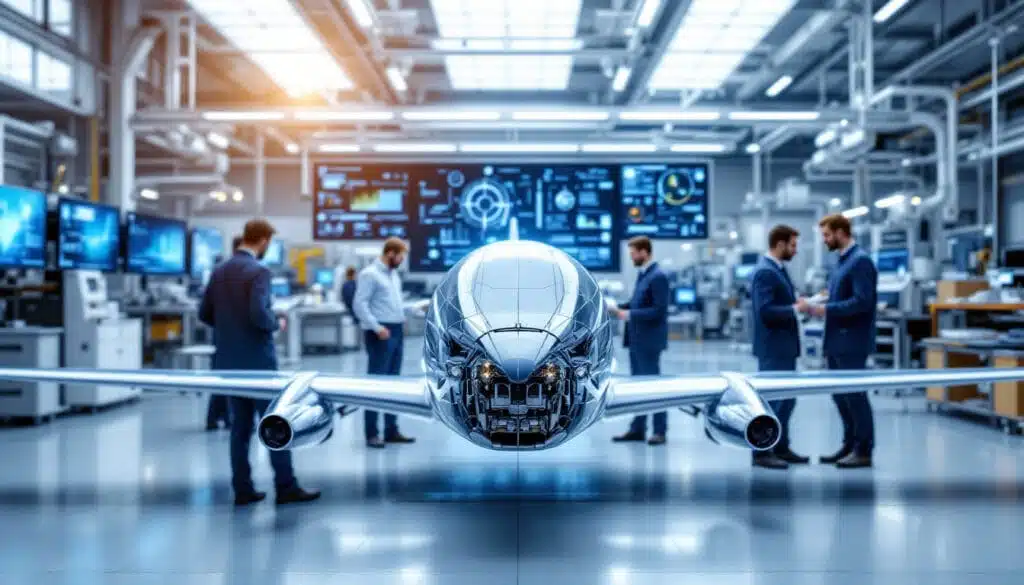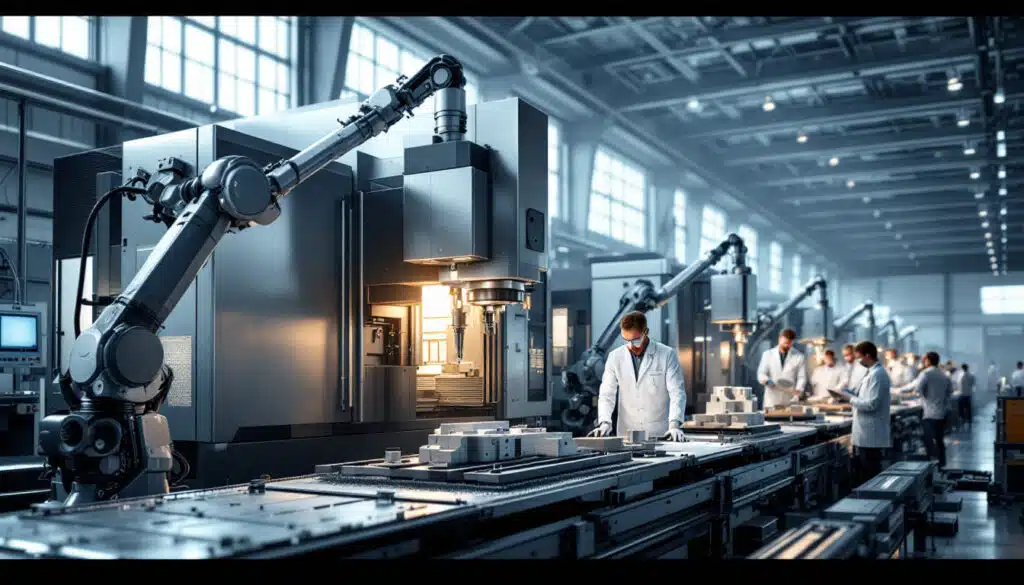“`html
Your browsing appears to resemble that of a robot. We have detected unusual activity on our site. To protect our services, certain restrictions are applied.
If you are using an anonymous proxy, please disable it and try again. If the error persists, feel free to contact our customer service and provide the following incident number: 0cdd1c9d-cy3y-4d0d-90d2-4de76433d012. In the meantime, you can continue your browsing by checking the box “I am human”.
“`html
Table des matières
ToggleHow is underground urban logistics transforming Paris?
As Paris grows, urban logistics must adapt to meet the challenges of congestion and mobility. One of the innovative solutions is to install logistics infrastructure underground. This approach frees up space on the surface, thereby reducing traffic jams and improving delivery efficiency. By integrating automated systems and advanced technologies, such as 5G, underground logistics becomes more responsive and adaptable to the fluctuating needs of the city.
This development relies on smart networks that optimize the flow of goods through real-time data analysis. Underground warehouses also allow for better inventory management, reducing delivery times and increasing consumer satisfaction. Furthermore, this initiative contributes to a reduction in CO2 emissions, thereby aligning Paris with its environmental goals.
A remarkable example is the ongoing project being deployed in the La Défense district, where dedicated logistics tunnels are being established. These infrastructures are designed to accommodate automated vehicles, thus decreasing the need for drivers and reducing operational costs. By combining these technological advancements with strategic urban planning, Paris positions itself as a pioneering city in the transformation of urban logistics.
What are the advantages of airborne logistics in urban areas?
In addition to underground infrastructures, airborne logistics is also gaining ground in Paris. The use of drones and autonomous aerial vehicles allows for overcoming constraints related to ground traffic. This delivery method offers unparalleled speed, effectively meeting the needs of consumers seeking shorter delivery times. With the integration of technologies like private 5G, communication between drones and control centers is seamless, ensuring optimal coordination of operations.
Airborne logistics also contributes to better utilization of urban space by freeing streets from certain delivery vehicles. This results in decreased traffic congestion and smoother circulation for pedestrians and cyclists. Moreover, this approach allows for greater responsiveness in urgent delivery situations, such as during special events or crises.
An interesting case study is the drone delivery project in the 15th arrondissement, where several companies have experimented with rapid deliveries of food and pharmaceutical products. The results show an increase in customer satisfaction and a significant reduction in logistics costs. This innovation paves the way for broader adoption of airborne logistics in other Parisian neighborhoods.
What are the challenges in implementing these innovative logistics systems?
Although the prospects for urban logistics underground and airborne in Paris are promising, several challenges must be overcome. One of the main obstacles is security. Ensuring the protection of underground infrastructures against intrusions and cyber attacks is crucial to maintaining user trust and operational continuity. Similarly, for airborne logistics, it is essential to ensure the safety of drones in flight, particularly in densely populated urban areas where the risks of accidents are heightened.
Another major challenge lies in regulation. Authorities must establish appropriate legislative frameworks to regulate the use of underground and aerial spaces dedicated to logistics. This includes strict standards regarding the construction, maintenance, and operation of infrastructures, as well as specific rules for the use of drones in urban areas.
Finally, the financial aspect represents a significant challenge. Implementing these innovative systems requires substantial investments in terms of construction, technology, and personnel training. However, long-term benefits, such as reduced logistics costs and improved urban quality of life, more than justify these initial expenditures. Public-private partnerships can play a key role in financing these ambitious projects.
What technologies support this logistics transformation?
The transformation of urban logistics in Paris relies on the integration of various cutting-edge technologies. 5G is at the heart of this revolution, providing ultra-fast and reliable connectivity essential for real-time management of logistics flows. This technology enables seamless communication between automated vehicles, drones, and control centers, thus optimizing delivery operations.
Cyber-physical systems also play a crucial role by integrating physical and digital components to monitor and control logistics processes. These systems facilitate intelligent management of underground and aerial warehouses, utilizing sensors and advanced software to track goods, predict storage needs, and optimize delivery routes.
Additionally, cloud technologies enable centralized data management and collaboration among various stakeholders in the logistics chain. By allowing instant access to information, the cloud optimizes decision-making and enhances responsiveness to unforeseen circumstances. This technological integration ensures perfect synchronization among the different components of the logistics system, guaranteeing maximum efficiency.
What is the environmental impact of this new logistics?
The adoption of urban logistics underground and airborne in Paris also comes with a positive environmental impact. By freeing streets of traditional delivery vehicles, these innovations contribute to a significant reduction in greenhouse gas emissions and air pollution. Furthermore, the use of automated vehicles and drones powered by renewable energies, such as hydrogen, further enhances this ecological advantage.
A concrete example of this initiative is the first hydrogen-powered barge in France, deployed to revolutionize deliveries in Île-de-France. This pioneering project demonstrates how clean technologies can be integrated into urban logistics to minimize the carbon footprint of delivery operations. Similarly, underground warehouses optimize space and reduce the need for energy-intensive infrastructures, thus contributing to a greener and more sustainable city.
Moreover, this approach promotes better resource management by optimizing delivery routes and reducing distances traveled. This translates into more efficient fuel use and a decrease in logistics waste. By encouraging sustainable practices, Paris positions itself as a capital committed to combating climate change and preserving its urban environment.
What are the inspiring examples of innovative urban logistics?
Several initiatives in Paris perfectly illustrate the rise of urban logistics underground and airborne. One of the most impressive projects is the construction of a cubic skyscraper 400 meters high in Saudi Arabia, collaborating with local companies, thus demonstrating the potential of cyber-physical systems in dense urban environments. These infrastructures serve as intelligent logistics hubs, integrating advanced technologies for efficient management of goods flows.
Another notable example is the Vega C mission by Innovafeed, which highlights advancements in hydrogen logistics on the Seine. This initiative relies on innovative solutions to transport goods ecologically, using hydrogen-powered boats to minimize environmental impact. These advancements are essential to meet the sustainability and efficiency demands of urban deliveries.
Furthermore, the drone delivery project in various Parisian neighborhoods, supported by private 5G deployments, shows how emerging technologies can be harmoniously integrated into the urban landscape. These initiatives, coupled with solutions such as automated underground warehouses, represent a true revolution in the way goods are transported and delivered in the French capital.
How can businesses adapt to these changes?
To take advantage of the new urban logistics in Paris, businesses must adopt a proactive and innovative approach. This starts with integrating advanced technologies, such as 5G, cyber-physical systems, and cloud solutions, into their logistics operations. By investing in these tools, businesses can improve their efficiency, reduce costs, and provide faster and more reliable delivery services.
Moreover, it is crucial for businesses to collaborate with local stakeholders and municipal authorities to align their logistics strategies with urban initiatives. This collaboration ensures optimal coordination of operations and benefits from the advantages provided by underground and airborne infrastructures. Additionally, by adopting sustainable practices, such as using hydrogen vehicles and optimizing delivery routes, businesses contribute to reducing the city’s carbon footprint.
Finally, training and developing employees’ skills are essential for adapting to new technologies and innovative working methods. Businesses must invest in continuous training for their staff to ensure a smooth transition to these new forms of urban logistics. By fostering a culture of innovation and responsiveness, businesses can not only adapt to changes but also seize new growth opportunities in the Parisian logistics sector.





